
Why is Echizen oroshi soba so delicious? We asked a French designer living in Fukui
Why is Echizen oroshi soba so delicious? We asked a French designer living in Fukui
A simple yet delicious dish that has captivated a French palate
— Just what is Echizen oroshi soba?
VL: Soba is noodles made from buckwheat flour, and Echizen is the name of an area in Fukui Prefecture. You usually boil them, chill them in cold water and serve them on a plate. You eat them with tsukejiru or dipping sauce made from soy sauce and dashi stock. You add negi onions and wasabi to the tsukejiru, to taste. With Echizen oroshi soba, you add daikon oroshi, which is grated daikon radish. The sharpness of the radish sets off the flavor of the soba.
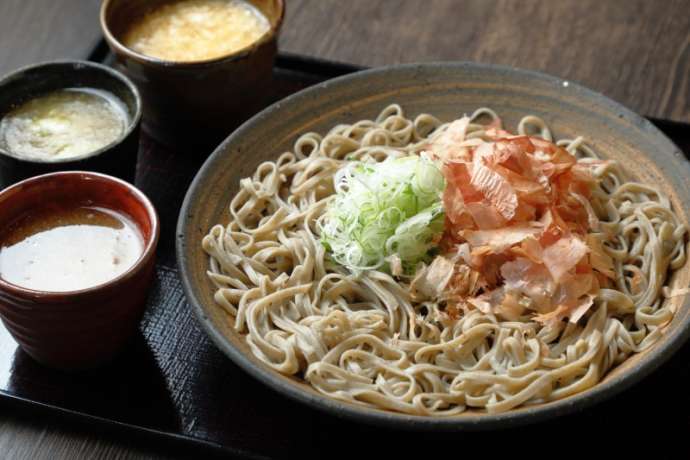
— What did you think of soba when you first tried it?
VL: To be honest, when I first saw soba, I didn’t even know how to eat it [Laughs]! I wondered if I was supposed to pour the tsukejiru over the noodles. For my taste, the flavor was too simple, and it left me feeling unsatisfied.

— So how did you come to like soba?
VL: What makes soba special is their delicate flavor. I didn’t understand that at first, but after we moved to Fukui, I started to understand how delicious they are, and I gradually became addicted! The key point is the flavor of the grated daikon. Soba restaurants are very choosy, and insist on the best possible daikon. Eventually I realized the hot, peppery taste was not just spicy, but actually delicious.
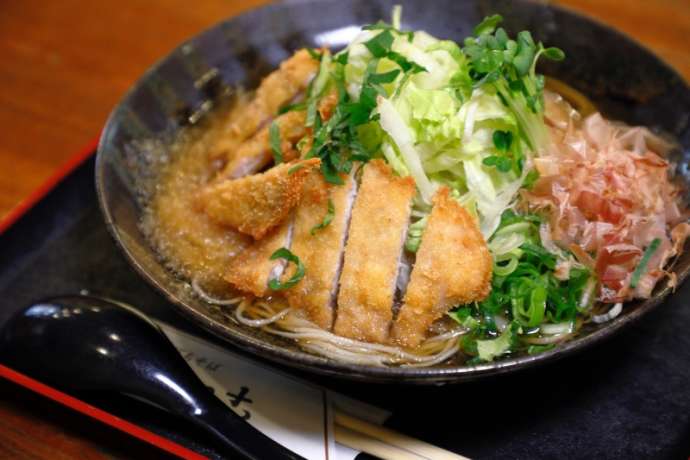
Oroshi katsu soba (Soba with pork cutlet and grated daikon radish)
VL: After I’d eaten soba a few times more, I noticed that the noodles themselves differed from one restaurant to the next. Soba have different names, according to the percentage of buckwheat flour. Soba made with 100% buckwheat flour are known as juwari-soba (“ten-tenths soba”). The texture is quite rough, and they have a strong buckwheat flavor. Noodles made with 80% buckwheat and 20% wheat, or hachiwari-soba (“eight-tenths soba”), have a smoother texture. They’re both delicious, in different ways, and those differences are one of great the joys of soba.
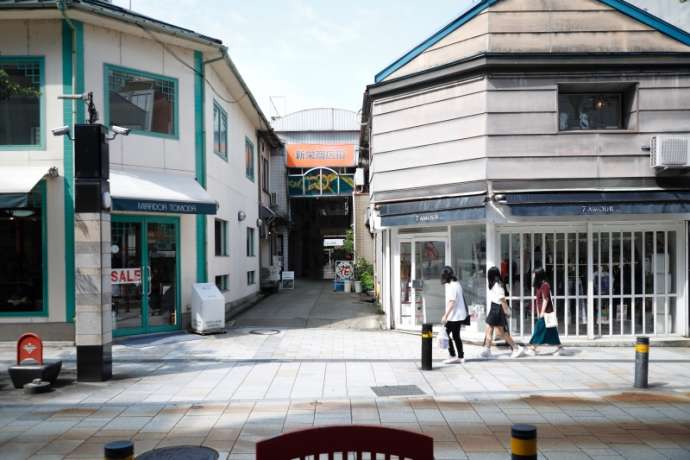
— What French cuisine would you compare soba to?
VL: Um, I don’t really know… The raw material is the same as for the galettes they make in northwest France, but it’s a completely different dish. You really sense the cultural difference. Galettes are buckwheat crèpes, which you eat with ham or cheese folded inside. They have a rich flavor that’s quite unlike the clean, fresh taste of soba. Soba is a really healthy dish. The ingredients are simple and natural, and eating soba removes toxins from the body and makes you feel clean.
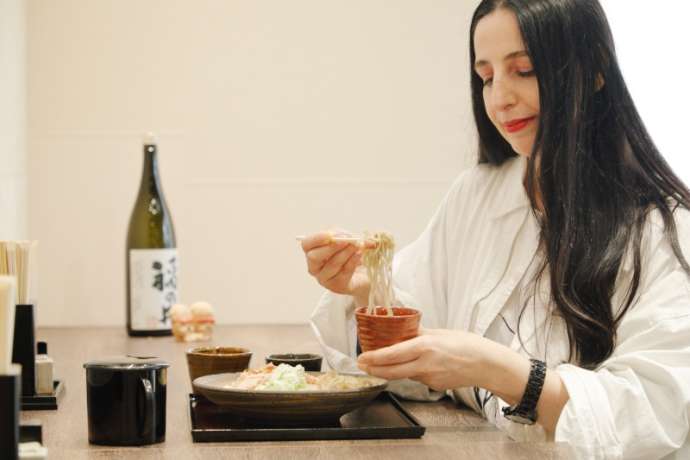
VL: When you’ve finished the soba, you mix the remaining tsukejiru with sobayu, water that has been used to boil the noodles, and drink it. It’s supposed to be good for your skin. Sobayu is a very special thing. You can’t get it unless you order soba. When you have one cup, you always want to drink more. That’s another reason I like soba so much.
Soba: the next big thing after ramen and sushi?!
— Do you think non-Japanese people can come to like soba, too?
VL: A restaurant serving Echizen oroshi soba recently opened in Paris. Sushi, ramen, and other Japanese dishes have become popular overseas, and people are curious about Japanese food, so they are already receptive to it. Soba are healthy and organic, and have a really Japanese feel to them, so I’m sure there will be a boom.
— What do you need to know when ordering soba for the first time?
VL: If you’re eating soba for the first time, you’ll probably find the flavor too simple, and you’ll feel unsatisfied, so I recommend ordering a set meal that includes tonkatsu (pork cutlet). Soba are almost fat-free, so if you add tonkatsu, you’ll get a balanced meal and feel satisfied. Most soba restaurants offer set meals that include tonkatsu or katsudon (pork katsu on a bed of rice).
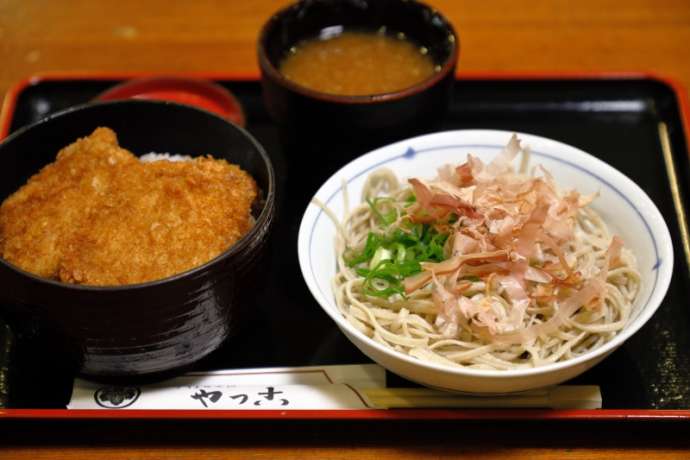
— If people are visiting Fukui, which restaurants do you recommend for Echizen oroshi soba?
VL: The restaurant I go to most often is the Joto branch of Teuchisoba Yakko (Teuchisoba Yakko Joto Bunten). As you go in, there’s a little kitchen space next to the entrance, and you can see a man who really looks like an expert making the noodles.

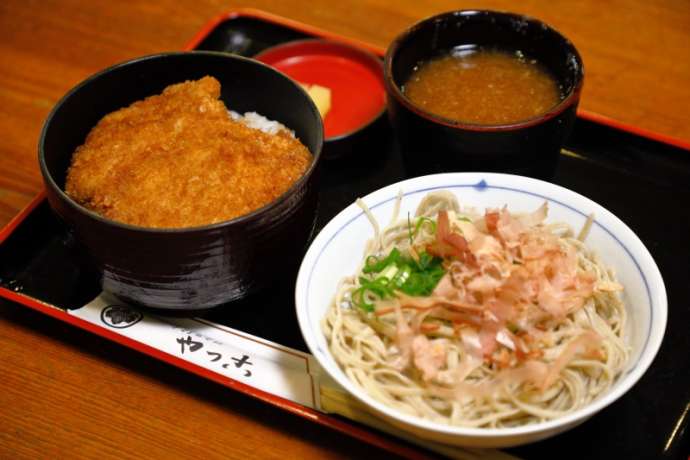
Another restaurant popular with locals is Miyoshiya Honten. They have great set menus centered on soba and katsudon, with little salad and vegetable side dishes, and many families go there for dinner.
When I’m in a hurry, and need to eat in the Fukui Station area, I go straight to Amida Soba Fukunoi. Unfortunately they don’t serve katsudon, but their juwari-soba with daikon oroshi dipping sauce is a really great example of Echizen oroshi soba.
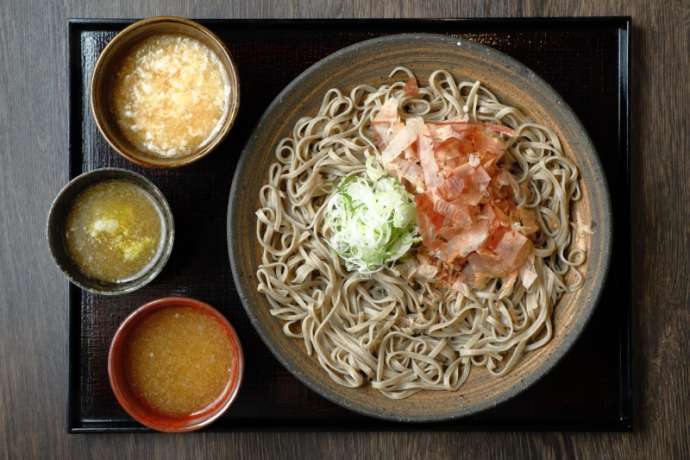
“Oroshi Soba Zanmai” at Amida Soba Fukunoi
If you have tried Echizen oroshi soba, and want to know more about the culture of soba, you could try making soba for yourself at Echizen Soba Dojo. You can experience the entire process under the guidance of professional teachers, all the way from kneading the soba dough to eating the noodles you have made at the end. My family and friends from France liked it a lot when they came over to visit.
Fukui is a city to watch, with traditional crafts as well as delicious cuisine and beautiful natural surroundings
— What makes Fukui special for you?
VL: I didn’t know anything about Fukui until I got here, and I never dreamed I would have any connection to it. But after I started living here I remembered that, when I was working as a designer in Paris, we used cloth from Fukui for luxury brands.

VL: There are some very light and ecological polyester materials that can only be made with technology developed in Fukui. Fukui also has a whole lot of amazing traditional crafts and local industries, including Echizen washi (Japanese paper), lacquerware and glassmaking.

— Unfortunately, foreign visitors to Japan don’t often know about Fukui, do they?
VL: It’s true, you don’t see many foreigners in Fukui. It’s close to Kyoto, but quite far from Tokyo, and you have to change buses and trains several times, so I guess they don’t consider it as a destination. But in 2023, the Hokuriku Shinkansen super-express line will reach Fukui, and you’ll be able to get here from Tokyo in less than three hours. So I’m sure interest in Fukui will grow rapidly from now on.

— What’s your advice for getting the most out of a visit to Fukui?
VL: Fukui has the sea, it has mountains, and it’s a big place, so it’s hard to do it in a day: you probably need two days. Some of the most popular tourist spots are Kanazu Sosaku no Mori, where you can see local arts and crafts, and the Fukui Prefectural Dinosaur Museum, which has really impressive reconstructions of dinosaurs. Fukui is still largely unknown to foreign visitors. Why not come and discover its attractions for yourself, including Echizen oroshi soba?

Information
|
Fukui | Japan Travel | JNTO |
|
https://www.japan.travel/en/destinations/hokuriku-shinetsu/fukui/ |
|
Teuchisoba Yakko Joto Bunten |
|
Address: 1-4-18 Joto, Fukui-shi, Fukui Access: 10 minutes’ walk from JR Fukui Station east exit |
|
Miyoshiya Honten |
|
Address: 1-11-3 Junka, Fukui-shi, Fukui Access: 7 minutes’ walk from JR Fukui Station west exit |
|
Amida Soba Fukunoi |
|
Address: Happiring 1F, 1-2-1 Chuo, Fukui-shi, Fukui Access: in front of JR Fukui Station west exit |
|
Echizen Soba Dojo |
|
Address: 31-1-91 Fukumachi, Fukui-shi, Fukui Access: around 10 minutes by taxi from JR Fukui Station |
|
Kanazu Sosaku no Mori |
|
Address: 57-2-19 Miyadani, Awara-shi, Fukui Access: around 10 minutes by taxi from JR Awara Onsen Station |
|
Fukui Prefectural Dinosaur Museum |
|
Address: Inside Katsuyama Dinosaur Forest Park, 51-11 Murokocho-terao, Katsuyama-shi, Fukui Access: around 15 minutes by community bus or around 10 minutes by taxi from Echizen Railway Katsuyama Eiheiji Line, Katsuyama Station; around 20 minutes by taxi from JR Echizen Ono Station |




















































